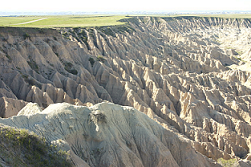Marl qualitative effects on the distribution of Quaternary deposits
Geophysics
DOI:
https://doi.org/10.14331/ijfps.2018.330119Keywords:
Marl formations and units, Quaternary units, Erosion types, Tehran ProvinceAbstract
Marls with badland, waterway, torrent, surface, rill, gully, rock and tunnel erosion, as the most sensitive lithology against erosion and weathering, have a major role in the sedimentation of watersheds. Marls of Iran based on minerals solvability are divided into two types: Evaporative and non-evaporative which have Special features and have been distributed in Tehran province. Formations and units of geology are important in sediments production and distribution marl units. In Tehran province, from the geological point of view, there is a combination of Alborz and Central Iran sedimentary units that based on maps geology information, on a scale of 1: 100000 and 1:250000 such as Tehran, Semnan, Amol, Ghazvin-Rasht, Marzanabad (Chalus) the geology formations and units exist often. There isn’t any gap in geology maps. Often marl geology formation and units such as
Karaj, Ziarat, upper red and under red formation, are Cenozoic age and has been distributed in Tehran province North. Based on studies and this research geology marl Formations and units have been effective about percent 10 on sediment production and quaternary distribution in Tehran province
Downloads

Downloads
Published
How to Cite
Issue
Section
License
Copyright (c) 2020 International Journal of Fundamental Physical Science

This work is licensed under a Creative Commons Attribution 4.0 International License.










